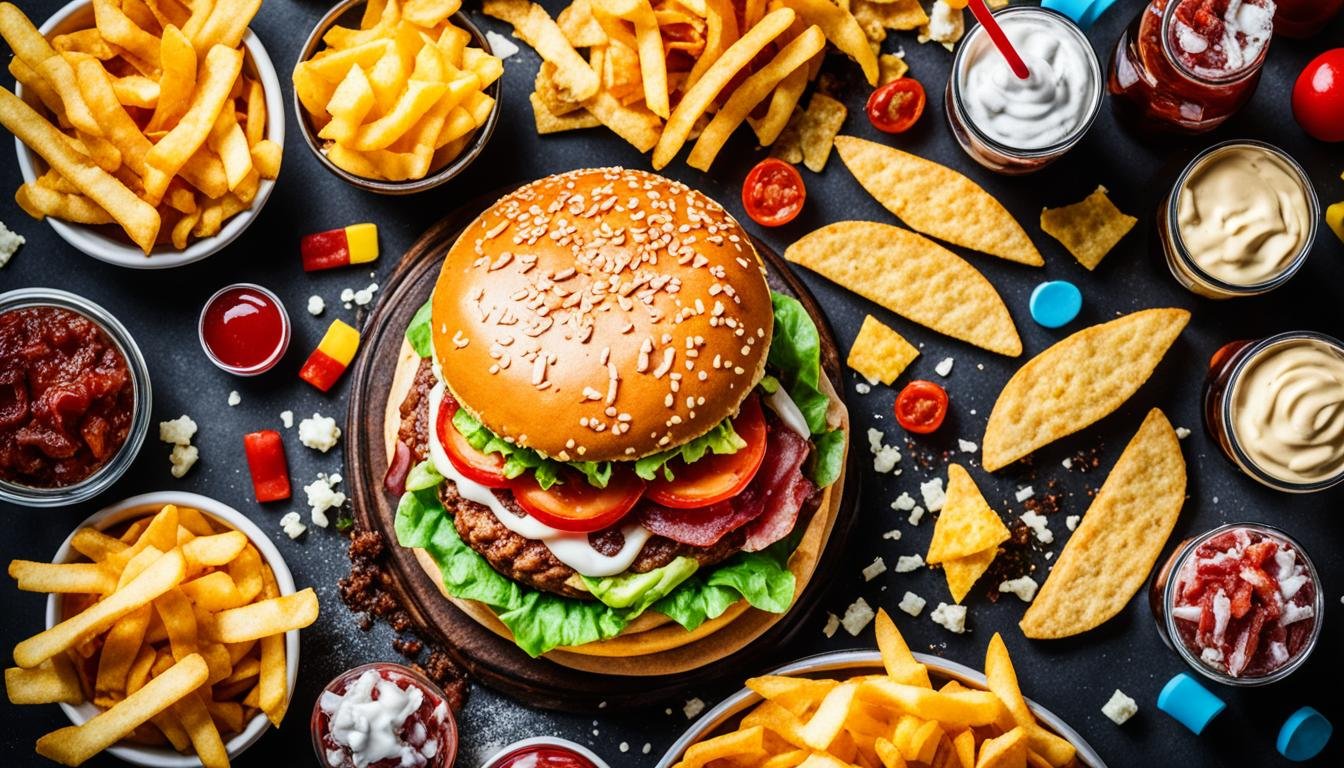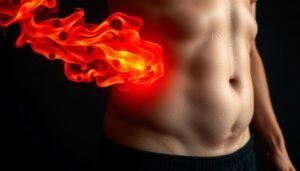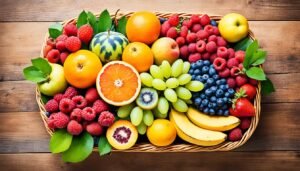Get our FREE E-Book HERE - 120 TIPS for Losing Weight & Bonus Tips for Postpartum Weight Loss & Dad’s Postpartum Experience
What is Dirty Keto ?


What is Dirty Keto?
If you’ve ever considered trying the ketogenic diet, you’ve likely come across the concept of “dirty keto.” But what exactly is dirty keto, and how does it differ from the traditional approach? Is it a shortcut to weight loss or a risky dietary choice?
It is a variation of the ketogenic diet that focuses on reducing carbohydrate intake and increasing fat consumption without considering the quality of the food consumed.
Unlike the clean keto approach, which emphasizes whole foods and nutrient-dense ingredients, this diet allows for the inclusion of processed foods, fast food, and other convenience items. But does this flexibility come at a cost?
In this article, we will delve into the world of dirty keto and explore its benefits, drawbacks, and potential long-term consequences. Whether you’re a curious beginner or an avid keto follower, this comprehensive guide will provide you with the information you need to make an informed decision about your dietary choices.
Key Takeaways:
- Dirty keto is a variation of the ketogenic diet that allows for the consumption of processed and fast foods.
- Unlike clean keto, dirty keto doesn’t prioritize the quality of the food consumed.
- It offers flexibility but may lead to potential health consequences and nutrient deficiencies.
- Choosing a clean and balanced approach to the keto diet is recommended for long-term health.
- Consulting with a healthcare professional before starting any new diet is always a good idea.
Understanding the Basics of the Keto Diet

The ketogenic diet, also known as the keto diet, is a low-carb, high-fat diet that aims to put the body in a metabolic state called ketosis. In ketosis, the body burns fat for fuel instead of glucose, resulting in weight loss and potential health benefits.
Defining Ketosis: The Goal of a Keto Diet
Ketosis is the metabolic state where the body produces molecules called ketones from fat breakdown. These ketones become the primary source of energy for the body instead of glucose. Achieving and maintaining ketosis is the main goal of a keto diet and is what sets it apart from other low-carb diets.
The Macronutrient Breakdown in Traditional Keto
In a traditional keto diet, the macronutrient breakdown typically consists of 70-80% fats, 20-25% proteins, and 5-10% carbohydrates. This high fat, moderate protein, and low carbohydrate ratio forces the body to rely on fat as its primary source of energy, leading to weight loss and other potential health benefits.
When following a keto diet, it’s important to focus on consuming high-quality fats, such as avocados, nuts, and olive oil, along with lean sources of protein, such as chicken, fish, and tofu. Carbohydrate intake should be limited to mostly non-starchy vegetables and small amounts of low-glycemic fruits.
By understanding the basics of the keto diet, including the concept of ketosis and the macronutrient breakdown, you can effectively follow this low-carb, high-fat diet and reap its potential benefits.
The Dirty Keto Diet Explained

This diet is a variation of the ketogenic diet that offers a more flexible approach to achieving ketosis. Unlike the traditional keto diet that emphasizes clean, whole foods, the dirty keto diet allows for the inclusion of processed and fast foods. This flexibility makes it appealing to individuals who find it challenging to adhere strictly to a clean keto diet.
The Flexibility and Appeal of Dirty Keto
One of the key benefits of the dirty keto diet is its flexibility. While the traditional keto diet requires careful monitoring of food quality and strict adherence to macronutrient ratios, this diet allows for more leniency. This flexibility makes it easier to follow the diet and may help individuals maintain their commitment in the long term.
Typical Dirty Keto Foods and Macronutrients
Dirty keto foods generally include sugar-free snacks, processed meats, low-carb chips, and diet sodas. These foods are often convenient and widely available, making them popular choices for individuals on this diet.
The macronutrient breakdown in dirty keto is similar to that of the traditional keto diet. It emphasizes high fat intake, moderate protein consumption, and low carbohydrate intake. By following this macronutrient distribution, the body is encouraged to enter a state of ketosis, where it burns fat for fuel instead of carbohydrates.
Weight Loss on Dirty Keto
So, can dirty keto lead to weight loss? The answer is yes, it can. By significantly reducing carbohydrate intake, in this way, the body can be put into a state of ketosis, where it burns fat for fuel instead of carbohydrates. This can lead to weight loss over time. However, it’s important to note that while dirty keto may help with weight loss in the short term, it may not provide the same health benefits as the traditional keto diet.
For beginners considering dirty keto, it’s crucial to understand that a diet solely focused on macros and ignoring food quality may have long-term consequences on overall health. Opting for nutrient-dense, whole foods is essential for providing the body with essential vitamins, minerals, and antioxidants.
It’s also important to remember that weight loss is just one aspect of health, and focusing on overall well-being should be the ultimate goal.
Drawbacks of Dirty Keto
Inflammatory vegetable oils
Vegetable oils like soybean, corn, canola, and sunflower oil are commonly used in cooking and food preparation. These oils may seem harmless, but they have been linked to a range of health concerns, including inflammation. When consumed in excess, they can lead to oxidative stress in the body, contributing to chronic diseases such as heart disease and obesity. This is particularly concerning for those following dirty keto weight loss programs, as inflammation can hinder progress and jeopardize overall health.
In contrast, clean keto diets emphasize consuming healthy fats such as avocados, nuts, and olive oil. These fats have been shown to have anti-inflammatory properties, providing numerous health benefits. By swapping out inflammatory vegetable oils for healthier alternatives, you can improve your dirty keto meal plan and maximize your weight loss efforts.
It’s important to be mindful of the impact inflammatory vegetable oils can have on your overall health. By making small dietary changes and opting for healthier fats, you can enhance your journey towards a healthier lifestyle and achieve sustainable weight loss.
Micronutrient deficiency
This diet often neglects the importance of nutrient-dense choices. Advocates of dirty keto prioritize convenience and simplicity, opting for processed and low-quality foods rather than whole, nutritious options. Dirty keto recipes are typically filled with artificial ingredients, preservatives, and unhealthy fats, which can lead to micronutrient deficiencies over time.
In contrast, clean keto emphasizes consuming nutrient-dense and minimally processed foods. This approach prioritizes the quality of ingredients, focusing on natural, whole foods that provide essential vitamins and minerals.
Clean keto recipes often include lean meats, fish, leafy greens, nuts, and seeds, which promote overall health and reduce the risk of micronutrient deficiencies. While it requires a bit more effort and planning, clean keto is a more sustainable and balanced approach to the ketogenic diet.
Micronutrient deficiencies can have significant implications for our health. Inadequate intake of essential vitamins and minerals can lead to a compromised immune system, impaired cognitive function, and increased risk of chronic diseases. Hence, it is crucial to choose nutrient-dense options when following any dietary plan, including the ketogenic diet.
Lack of fiber
While Dirty Keto offers some benefits, such as effective weight loss and improved blood sugar control, it falls short when it comes to fiber intake. Fiber is an essential nutrient that aids digestion, promotes satiety, and supports a healthy gut microbiome. Unfortunately, this diet tends to exclude high-fiber foods, such as fruits, vegetables, and whole grains, in favor of processed and packaged low-carb foods.
The lack of fiber in a dirty keto diet can have several negative consequences. Firstly, it can lead to digestive issues like constipation and bloating. Fiber acts as a natural bulking agent, helping to regulate bowel movements and prevent these uncomfortable symptoms. Additionally, a low-fiber diet may hinder weight loss efforts by slowing down digestion and reducing feelings of fullness, making it easier to overeat.
To ensure a well-rounded and balanced approach to the ketogenic diet, incorporating fiber-rich foods is crucial. So, whether you’re aiming for weight loss or overall health, remember the importance of fiber and choose whole, unprocessed foods whenever possible.
Cardiovascular health risks
Dirty keto, with its emphasis on foods high in saturated fats, can have negative effects on your heart health. A diet rich in unhealthy fats can raise your cholesterol levels and increase the risk of heart disease.
It’s essential to prioritize a clean and balanced approach to the keto diet to mitigate these potential long-term consequences. Making healthier food choices, focusing on whole and nutrient-dense foods, and monitoring your nutrient intake can help minimize the risks associated with this diet.
Cravings and weight regain
The high-fat, low-carb nature of dirty keto may initially suppress appetite and lead to weight loss. However, the lack of nutrient-dense foods and the inclusion of processed options can result in cravings, making it challenging to maintain long-term weight loss.
It’s essential to prioritize a clean and balanced approach to the keto diet to mitigate these potential long-term consequences. Making healthier food choices, focusing on whole and nutrient-dense foods, and monitoring your nutrient intake can help minimize the risks associated with dirty keto.
Conclusion
In conclusion, the dirty keto diet offers a more flexible approach to the traditional ketogenic diet, allowing for the inclusion of processed and fast foods. While it may provide immediate weight loss benefits, it is important to consider the potential long-term consequences on overall health. Opting for a clean and balanced approach to the keto diet is recommended for optimal results.
Choosing a clean keto lifestyle means focusing on whole foods, healthy fats, and nutrient-dense ingredients. By swapping processed foods for whole foods, choosing healthy fats like avocado and coconut oil, and incorporating a variety of vegetables into your meals, you can ensure a nourishing and sustainable approach to keto.
Before embarking on any new diet or lifestyle change, it is crucial to consult with a healthcare professional. They can provide personalized guidance and help you make the best choices for your individual needs and goals. Remember, a well-rounded clean keto lifestyle can support your weight loss journey and improve overall health in the long run.
FAQ
What is Dirty Keto?
Dirty Keto is a variation of the ketogenic diet that focuses on reducing carbohydrate intake and increasing fat consumption without considering the quality of the food consumed.
What is the difference between Dirty Keto and Clean Keto?
Dirty Keto allows for the inclusion of processed and fast foods, while Clean Keto focuses on whole, unprocessed foods.
What are typical Dirty Keto foods?
Typical Dirty Keto foods include sugar-free snacks, processed meats, low-carb chips, and diet sodas.
What is the macronutrient breakdown in Dirty Keto?
The macronutrient breakdown in Dirty Keto is similar to traditional Keto, with high fat, moderate protein, and low carbohydrate intake.
How can I eat clean on a Keto diet?
To eat clean on a Keto diet, focus on whole foods, healthy fats, and a variety of vegetables. Swap processed foods for whole foods, choose healthy fats like avocado and coconut oil, and incorporate plenty of vegetables into your meals.
What are the potential long-term consequences of a Dirty Keto lifestyle?
The consumption of processed foods, artificial sweeteners, and low-quality fats in Dirty Keto can lead to nutrient deficiencies, inflammation, cravings, weight regain, and other health risks.
What is the recommended approach to a Keto diet?
It is recommended to choose a clean and balanced approach to the Keto diet, focusing on whole foods, healthy fats, and nutrient-dense ingredients. Consult with a healthcare professional before starting any new diet or lifestyle change.




